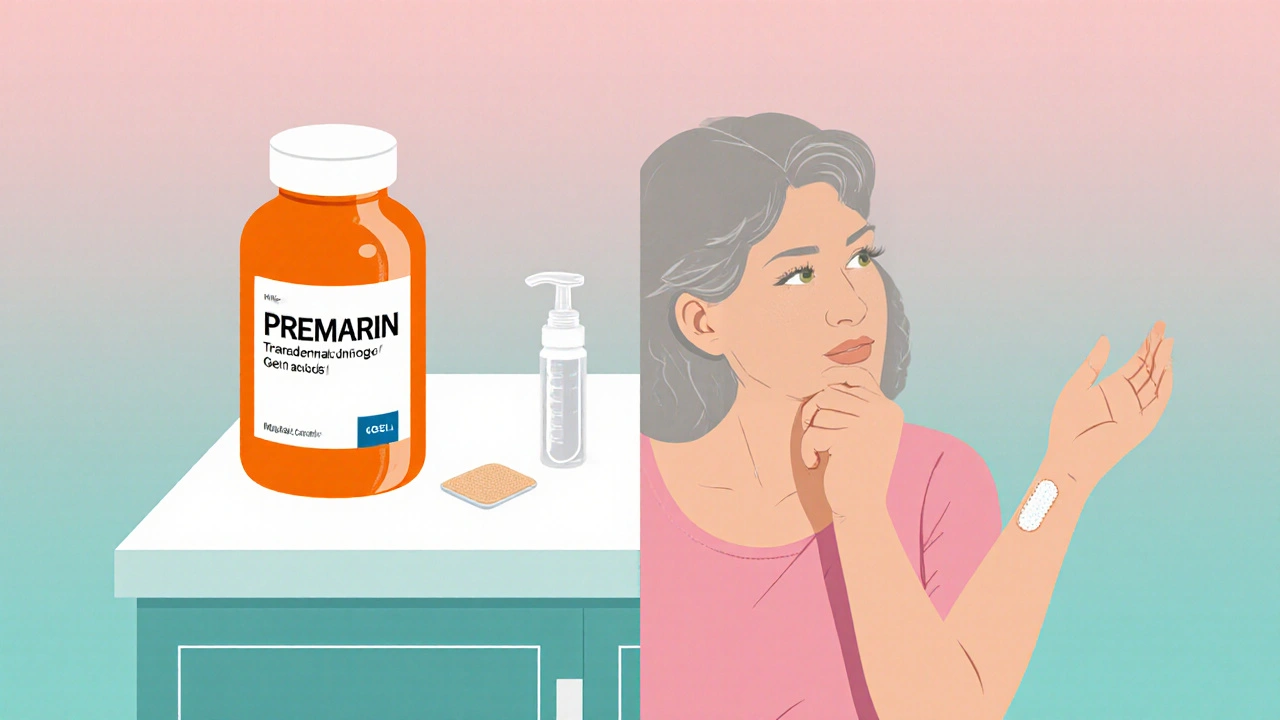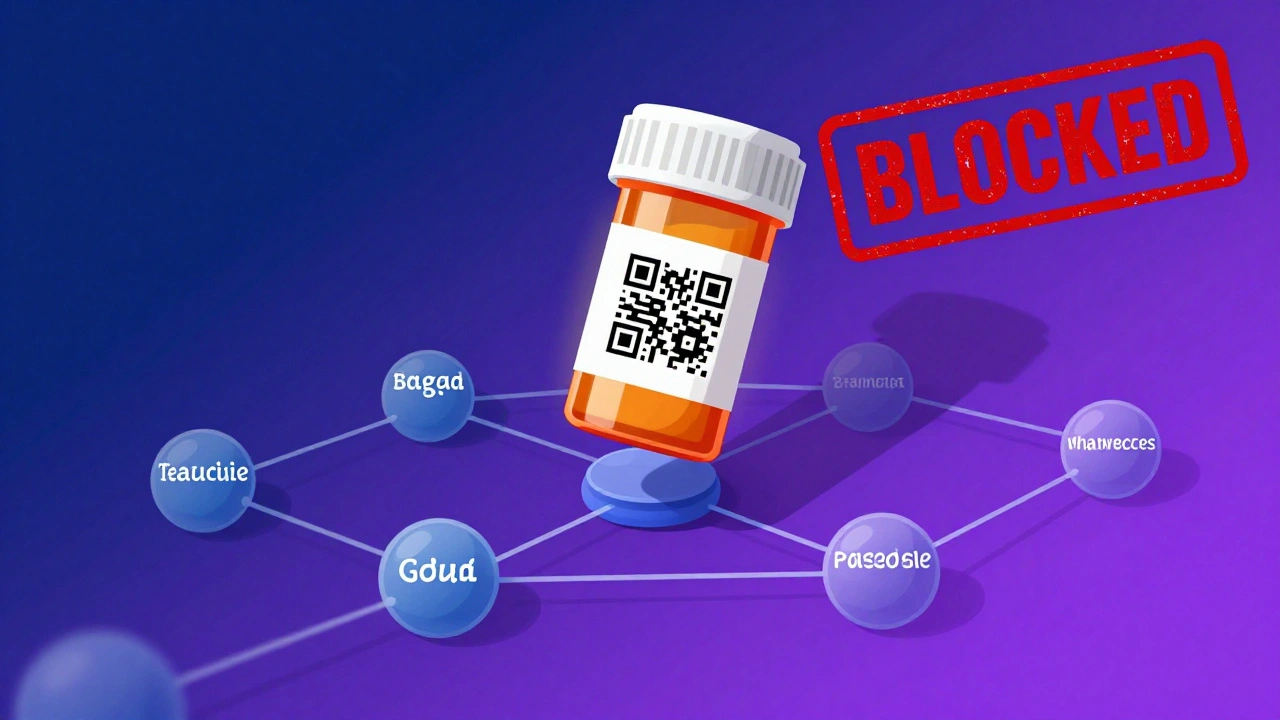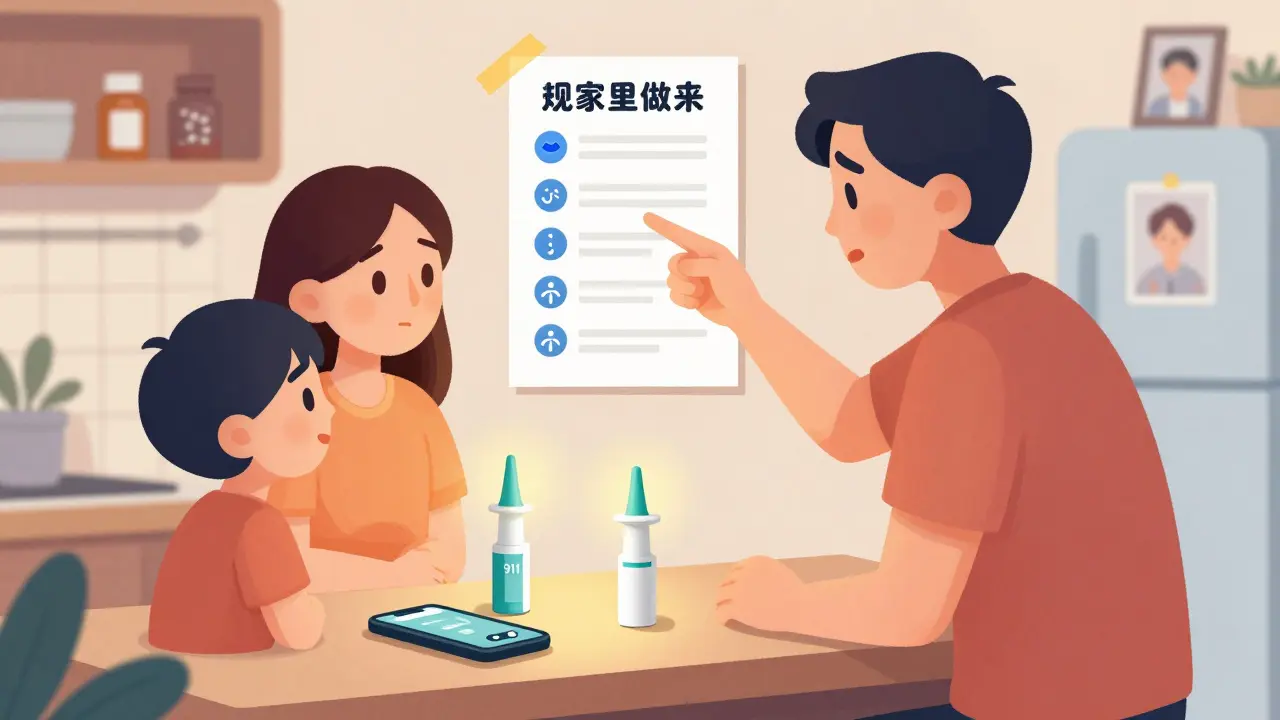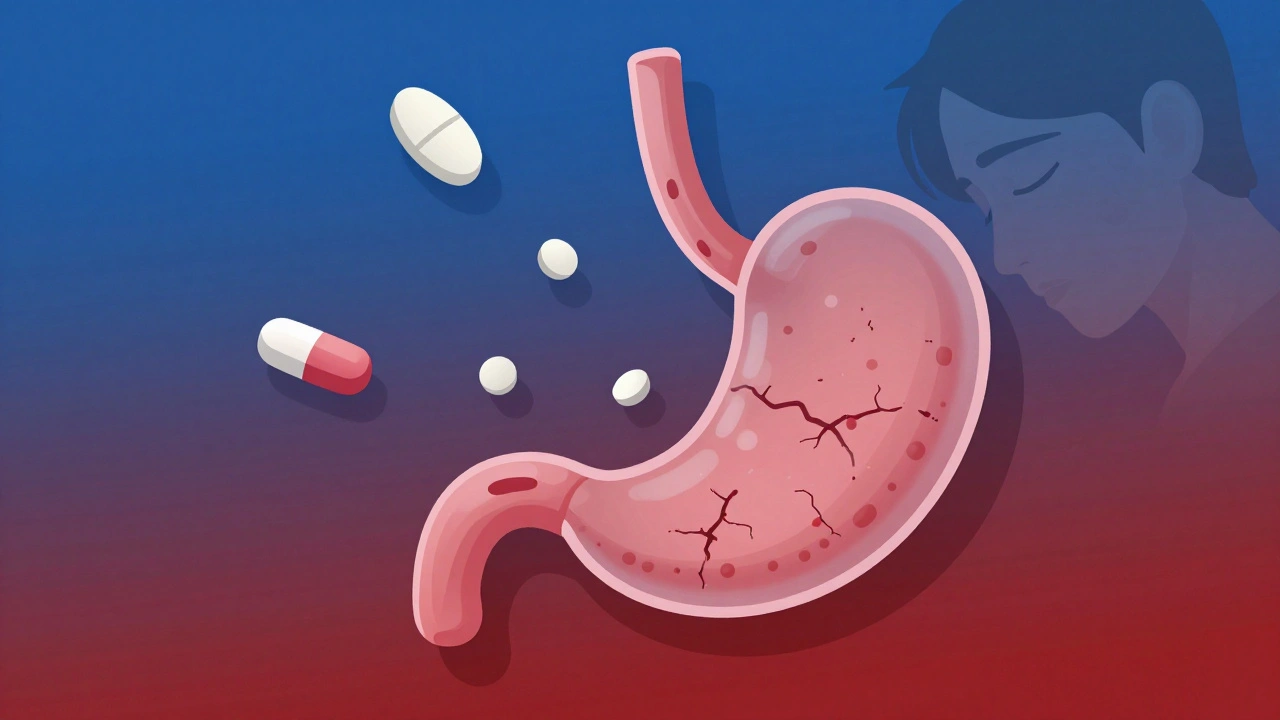Estrogen Therapy Cost Calculator
Estrogen Therapy Cost Comparison
Compare monthly costs of different estrogen therapies based on your insurance coverage.
Key Takeaways
- Premarin is a mixed‑estrogen product taken orally, while most alternatives use a single, bioidentical estrogen.
- Transdermal and topical routes avoid first‑pass liver metabolism, reducing clot risk.
- Cost varies widely - generic estradiol pills are cheapest, patches and gels sit in the mid‑range, and compounded options can be pricey.
- Side‑effect profiles differ: Premarin may cause more fluid retention, while estradiol patches often cause skin irritation.
- Choosing the right therapy depends on age, health history, symptom severity, and personal preference.
When it comes to managing menopause symptoms, Premarin (Conjugated Estrogens) is a prescription hormone replacement therapy (HRT) made from pregnant mare’s urine, containing a blend of estrogen compounds. It’s been on the market for decades, but many women wonder whether a more modern, bio‑identical option might work better. Below, we break down the most common alternatives, compare them side by side, and give you practical tips for picking the right regimen for your body and lifestyle.
Understanding Premarin
Premarin delivers a mixture of estrogen types-mostly estrone sulfate, along with smaller amounts of estradiol and estriol. Because it’s taken as an oral tablet, the hormones travel through the digestive system and liver before reaching circulation. This “first‑pass” effect can increase the production of certain clotting factors, which is why doctors often monitor blood pressure and lipid levels closely in patients using oral estrogen.
Typical dosing starts at 0.3mg to 0.6mg per day, paired with a progestogen if you have an intact uterus. Benefits include relief from hot flashes, night sweats, and vaginal dryness, as well as protection against bone loss. However, side effects can include bloating, breast tenderness, nausea, and a slightly higher risk of venous thromboembolism compared with some non‑oral forms.
Common Alternatives to Premarin
Most alternatives use a single, bio‑identical estrogen-estradiol-delivered via different routes. Below are the top options you’ll encounter:
- Estradiol oral tablets: Generic 17β‑estradiol pills, usually 0.5mg or 1mg per day.
- Estradiol transdermal patches: Thin adhesive patches delivering 0.025mg to 0.1mg per day.
- Estradiol gel: Topical cream or gel applied to the arms or abdomen, typically 0.5mg to 1mg per day.
- Micronized estradiol: Micronized particles for oral or vaginal use, offering higher absorption.
- Soy isoflavones: Plant‑based phytoestrogens (e.g., 100mg daily) that act weakly on estrogen receptors.
- Tibolone: A synthetic steroid with estrogenic, progestogenic, and androgenic activity, used in some countries for menopausal therapy.
- Ethinyl estradiol: Low‑dose estrogen found in many oral contraceptives; occasionally prescribed off‑label for menopause.
All of these fall under the broader umbrella of Hormone Replacement Therapy (HRT) and are intended to relieve the same symptoms that Premarin targets.
Side‑by‑Side Comparison
| Attribute | Premarin (Oral) | Estradiol Oral Tablets | Estradiol Patch | Estradiol Gel | Micronized Estradiol | Soy Isoflavones | Tibolone |
|---|---|---|---|---|---|---|---|
| Formulation | Conjugated estrogens (mix) | Pure 17β‑estradiol | Transdermal matrix | Topical gel | Micronized particles | Phytoestrogen supplement | Synthetic steroid |
| Route | Oral | Oral | Skin (patch) | Skin (gel) | Oral or vaginal | Oral | Oral |
| Typical Dose | 0.3-0.6mg daily | 0.5-1mg daily | 0.025-0.1mg/24h | 0.5-1mg daily | 0.5-2mg | 80-100mg | 2.5mg daily |
| Bioavailability | Low (first‑pass metabolism) | Moderate | High (bypasses liver) | High (bypasses liver) | High | Very low (weak binding) | High |
| Clot Risk | ↑ (oral) | ↑ (oral, but lower than Premarin) | ↓ (transdermal) | ↓ (topical) | ↓ to moderate | Minimal | Variable |
| Common Side Effects | Bloating, breast tenderness, nausea | Headache, nausea | Skin irritation | Skin irritation, transfer to partner | GI upset | Rare GI upset | Acne, mood changes |
| Typical Cost (US$) | $40-$80 per month | $10-$25 per month | $150-$200 per month | $120-$170 per month | $30-$60 per month | $20-$35 per month | $90-$130 per month |
| FDA Status | Approved | Approved (generic) | Approved | Approved | Approved | Supplement (not FDA‑regulated) | Approved in EU, not US |
How to Choose the Right Option
- Assess your health profile. If you have a history of blood clots, cardiovascular disease, or uncontrolled hypertension, transdermal or topical routes are usually safer than oral forms.
- Consider symptom severity. Strong hot‑flash sufferers often benefit from higher‑dose oral estrogen (like Premarin) or a combination of oral estrogen plus a progestogen.
- Think about convenience. Patches are changed once a week, gels daily, and pills taken once a day. Choose what fits your routine.
- Evaluate cost and insurance coverage. Generic estradiol pills are typically covered by most health plans, while patches and gels may require higher copays.
- Discuss with your clinician. A personalized plan that balances risk and relief is essential. Hormone therapy isn’t one‑size‑fits‑all.
Safety, Monitoring, and Long‑Term Risks
All estrogen therapies share some baseline concerns: increased risk of venous thromboembolism (VTE), stroke, and, in very high doses, possibly breast cancer. However, the magnitude of risk varies by route and dose. Transdermal patches and gels tend to have the lowest VTE risk because they avoid the liver’s clot‑promoting effect. Oral forms-Premarin, estradiol tablets, and ethinyl estradiol-carry a modestly higher risk.
Regular follow‑up includes:
- Blood pressure check every 6-12months.
- Lipid panel (cholesterol, triglycerides) annually.
- Mammogram per guidelines (usually annually after age 40).
- Pelvic exam to assess uterine bleeding patterns if you have a uterus.
If you experience sudden leg pain, shortness of breath, or visual changes, seek medical attention right away-these could be signs of a clot.
Cost Considerations and Insurance
In the United States, insurance coverage often dictates the choice. Generic oral estradiol is the most affordable, usually under a $20 monthly copay. Premarin, being a brand name, sits higher, especially without a generic equivalent. Patches and gels are more expensive, but many insurers treat them as preferred because of their safety profile. If you’re outside the US, pricing can differ dramatically; for example, in Australia, the Pharmaceutical Benefits Scheme (PBS) subsidizes both Premarin and estradiol tablets, making the out‑of‑pocket cost minimal.

Real‑World Scenarios
Case 1 - Sarah, 52, heart‑healthy but clot‑prone: After a brief trial of Premarin, Sarah experienced a mild leg cramp and her doctor ordered a Doppler scan, which revealed a small clot. She switched to a low‑dose estradiol patch, saw her hot flashes subside, and had no further clot issues.
Case 2 - Maya, 48, budget‑conscious graduate student: Maya’s insurance covered generic estradiol tablets but not patches. She started on 0.5mg tablets, kept a symptom diary, and found the night sweats were manageable. The low cost let her stay on therapy for two years while monitoring bone density.
Case 3 - Lena, 55, prefers “natural”: Lena opted for soy isoflavone supplements after reading online. Her symptoms improved slightly, but she still suffered nightly hot flashes. Her doctor suggested adding a low‑dose estradiol gel, which finally gave her the relief she needed without major side effects.
Bottom Line
Premarin remains a viable option, especially for women who respond well to oral estrogen and can be monitored for clot risk. However, many alternatives-particularly transdermal and topical estradiol-offer comparable symptom control with a better safety margin and often at a lower cost. The best choice depends on your medical history, lifestyle, and budget. Always have an open conversation with your healthcare provider to tailor therapy to your unique needs.
Frequently Asked Questions
Is Premarin safer than other estrogen therapies?
Premarin is effective but carries a higher clot risk because it is taken orally. Transdermal patches and gels usually have a lower risk profile, making them safer for women with cardiovascular concerns.
Can I switch from Premarin to a patch without a wash‑out period?
Most clinicians recommend a short overlap-usually a few days-so estrogen levels stay steady. Talk to your prescriber for a specific taper plan.
Do soy isoflavones work as a replacement for prescription estrogen?
Soy isoflavones provide weak estrogenic activity. They may ease mild symptoms but rarely replace prescription‑strength therapy for severe hot flashes or bone loss.
What is the typical cost difference between Premarin and estradiol patches?
Premarin generally costs $40-$80 per month, while estradiol patches cost $150-$200 per month in the US. Insurance coverage can narrow the gap, especially if patches are listed as a preferred formulary.
How often should I have follow‑up labs while on estrogen therapy?
Check blood pressure and lipids every 6-12months, and schedule an annual mammogram. If you have a uterus, a pelvic exam should also be yearly.







Malia Rivera
October 17, 2025 AT 16:10When you weigh the history of Premarin against the modern alternatives, you’re really weighing a philosophy of medical conservatism versus progress. The fact that it’s derived from pregnant mare’s urine should make any American proud of our agricultural ingenuity, not ashamed of animal exploitation. We cannot let European regulators dictate our choices when the American market has survived decades of use. Oral estrogen is a reminder that our bodies are capable of metabolizing foreign compounds, a testament to human resilience. Yet the first‑pass effect that raises clot risk is a price we pay for that resilience, and it is one we should accept as a civic duty. The cost advantage of generic estradiol pills is a minor inconvenience compared with the national savings from using a single, well‑studied product. If you’re worried about skin irritation from patches, remember that a little rash is nothing compared with the threat of a deep‑vein thrombosis. The bio‑identical label is a marketing ploy, not a scientific revolution, and it distracts from the core issue of estrogen replacement. Women who have thrived on Premarin for years are evidence that the drug works, and anecdotal data should not be dismissed. Hormone therapy, like any intervention, carries risk, but risk is a given in a free society. The notion that transdermal routes are inherently safer is a myth propagated by foreign pharmaceutical interests. Insurance companies love the higher price tag of patches, and that drives the narrative, not patient safety. If you can afford the cheap pills, you can also afford routine labs to monitor lipids and blood pressure. The real question is whether we should abandon a proven therapy because of a thin veneer of “modernity.” In my view, the answer is no, because America must value continuity over fleeting trends. So, keep Premarin, monitor yourself, and let the market decide.
lisa howard
October 24, 2025 AT 14:50Oh dear, let me take you on a winding road through my own menopause saga, a tale so tangled it could rival any soap opera script; I started on Premarin because my mother swore by it, and I thought, “If it worked for her, it’ll work for me.” The first few weeks were a kaleidoscope of hot flashes that felt like fireworks exploding inside a tiny furnace, and I was drenched in sweat at every board meeting, feeling like a walking sauna. Then came the bloating-my abdomen puffed up like a balloon at a birthday party, and I found myself slipping into chairs that creaked under the pressure of my own intestines. I tried the estradiol patch after reading some glossy brochure, and the adhesive stuck to my skin like a clingy ex‑partner, leaving a rash that made me look like a rash‑covered tomato. The gel, oh the gel, was supposed to be a miracle, but I discovered that it transferred to my husband’s pillow, and he woke up with a faint estrogen scent that reminded him of a pharmacy aisle. I even experimented with soy isoflavones, thinking a “natural” route would be kinder, but the relief was as fleeting as a summer rain. My doctor, bless his heart, kept reminding me to get labs every six months, and each time the lab tech smiled, whispering, “How’s the blood pressure?” like a secret handshake among the initiated. In the end, I settled on a low‑dose estradiol tablet, a modest compromise that feels like a quiet lullaby after the storm of hormonal chaos. Yet every morning I look at the little pink pill and wonder if I’m betraying my mother’s legacy or finally carving my own path. Such is the drama of navigating estrogen therapy, a saga that never truly ends but keeps writing new chapters with every prescription change.
And so, dear readers, if you ever feel the urge to label yourself as “just another HRT patient,” remember that each of us is a protagonist in a story that intertwines biology, economics, and the relentless march of medical marketing.
Cindy Thomas
October 31, 2025 AT 12:30Sure, the patches are “safer,” but they’re just a clever way for pharma to charge more 🙄
Kate Marr
November 7, 2025 AT 11:10Honestly, I’m proud that American meds like Premarin keep our options diverse 😤💪
James Falcone
November 14, 2025 AT 09:50Premarin’s home‑grown formula beats those fancy foreign patches any day.
Frank Diaz
November 21, 2025 AT 08:30One must ask whether the pursuit of “bio‑identical” estrogens is not merely a philosophical veneer for avoiding the inconvenient truths of endocrinology. The premise that a single molecule is somehow purer than a blend ignores the evolutionary adaptability of our endocrine system. By rejecting Premarin, we risk substituting empirical evidence with speculative purity, a trend that has plagued modern medicine. It is a subtle surrender to the market’s desire for novelty over functionality. In the grand calculus of health, efficacy should outrank marketing allure, and Premarin still holds its ground.
Mary Davies
November 28, 2025 AT 07:10In the quiet corridors of my mind, I hear the subtle hum of hormones debating my fate, each whisper a reminder that my body is a battlefield of choices.
Valerie Vanderghote
December 5, 2025 AT 05:50Listen, I have to interject because I’ve seen too many women stumble through the maze of estrogen therapy without a map, and frankly it’s a tragedy that deserves a louder voice. I remember my aunt, who was on Premarin for years, and she swore by its ability to keep her nights cool, yet she never mentioned the subtle swelling in her calves that eventually led to a diagnosis of a deep‑vein clot. When she switched to a patch, the skin on her arm turned a shade of red that could rival a sunset, and she spent weeks applying soothing ointments that smelled like a pharmacy graveyard. Then there was my cousin, a budget‑conscious grad student, who tried soy isoflavones because “they’re natural,” only to find that her hot flashes turned into a nightly inferno that made her bedroom feel like a furnace. She begged her doctor to give her a “real” prescription, and after an endless series of insurance denials, she finally got a cheap generic estradiol tablet that barely eased the symptoms but saved her wallet. The point is, every route has its own saga, and the stories are as varied as the women who live them, so don’t let a glossy brochure dictate your destiny. It’s essential to read the fine print, ask for blood work, and keep a journal-every ounce of data helps you steer the ship away from hidden reefs. And if anyone tells you that one option is universally “best,” know that they’re probably selling you a dream, not a solution.
Michael Dalrymple
December 12, 2025 AT 04:30Thank you for sharing those detailed experiences; they underscore the importance of individualized counseling and diligent monitoring when navigating estrogen therapy.
Emily (Emma) Majerus
December 19, 2025 AT 03:10its ok to try diff meds as long as u keep tracking symptoms.